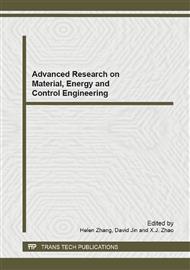p.344
p.348
p.353
p.357
p.361
p.365
p.373
p.376
p.381
Direct Current-Controlled Distribution Static Synchronous Compensator for Voltage Quality Improvement
Abstract:
This paper presents a direct current-controlled static reactive power compensator (DSTATCOM) for voltage quality improvement of low-medium distribution network. The main circuit of the DSTATCOM uses VSI-SPWM structure-based voltage source inverter (VSI), and both operation of reference current and control of compensation current are realized in synchronous reference frames. The function of DSTATCOM to mitigate voltage sag and flicker, two common voltage quality problems, is discussed in detail in this paper. According to the forming way of reactive reference current, operation mode of DSTACOM are classified into current control mode and voltage control mode. And under the two operation modes the function of DSTATCOM to mitigate voltage sag and flicker under different control modes is simulated with MATLAB. The simulation results show that the current control mode is suitable for mitigating voltage flicker, while the voltage control mode for voltage sag.
Info:
Periodical:
Pages:
361-364
Citation:
Online since:
January 2013
Authors:
Price:
Сopyright:
© 2013 Trans Tech Publications Ltd. All Rights Reserved
Share:
Citation:


